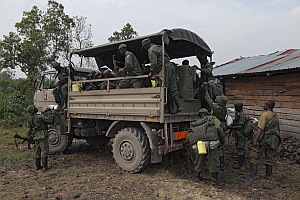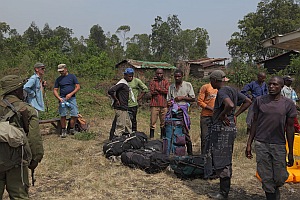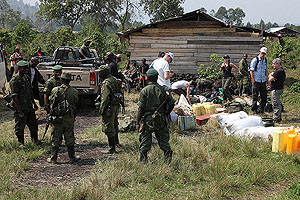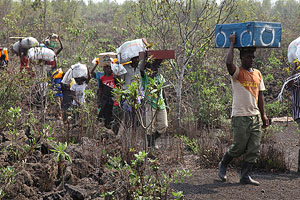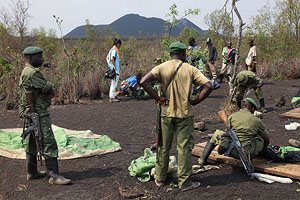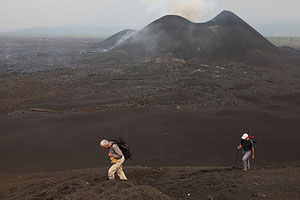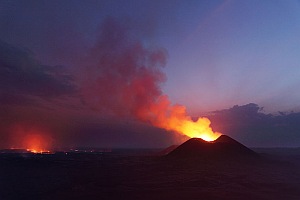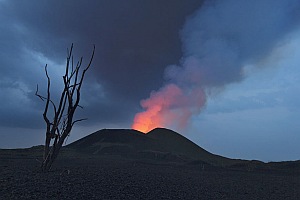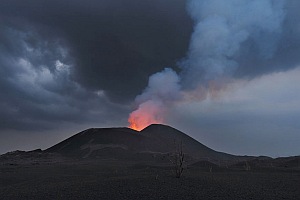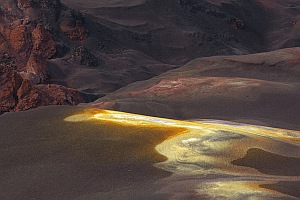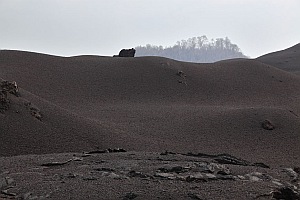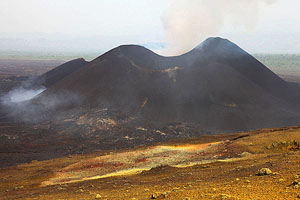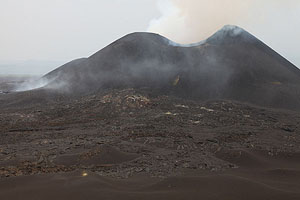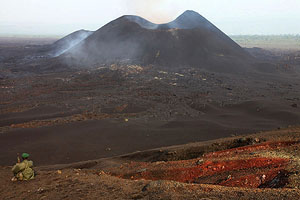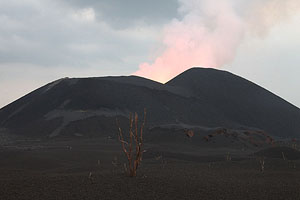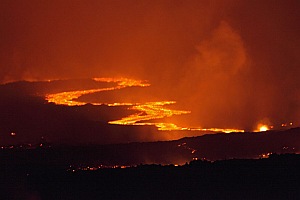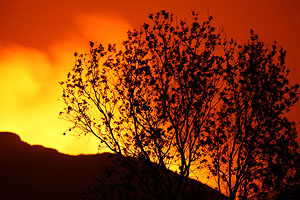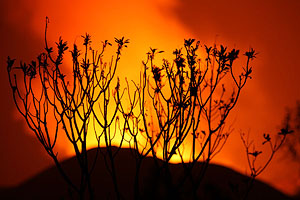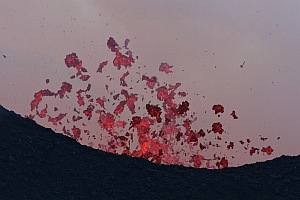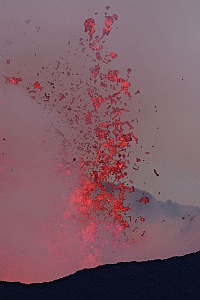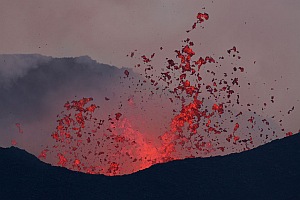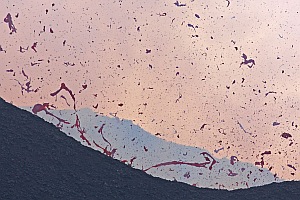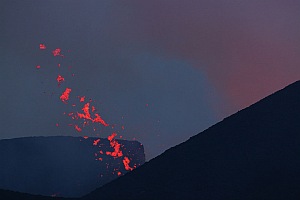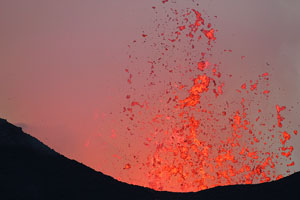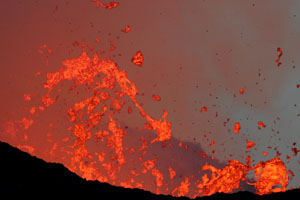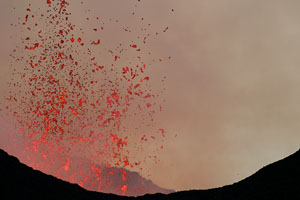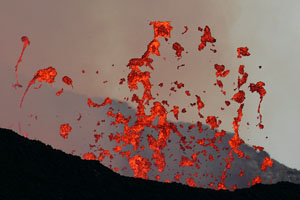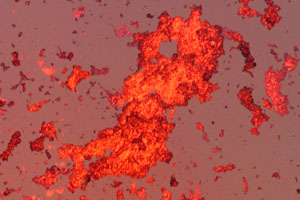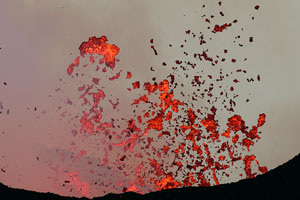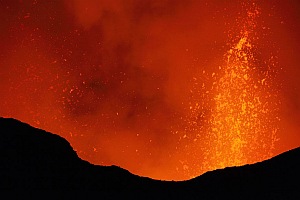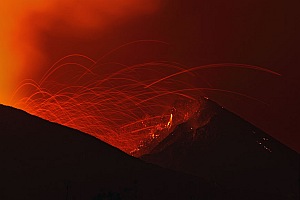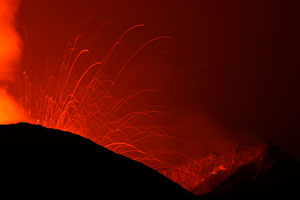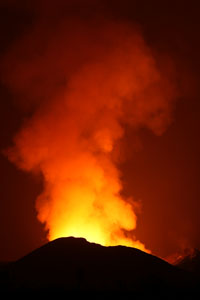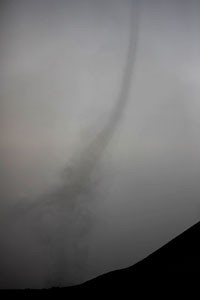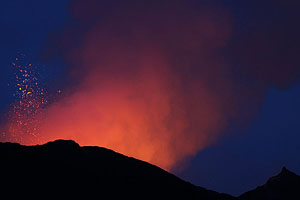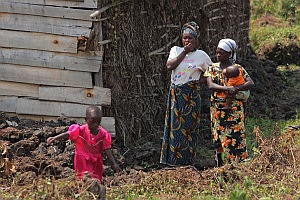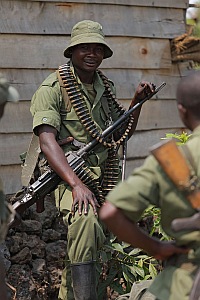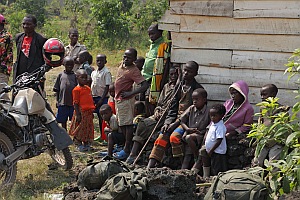|
DR-Congo 2012 Volcano: Nyamuragira
R.Roscoe, M.Rietze, M. Fulle, T.Pfeiffer, N.Fischer |
|
Nyamuragira volcano is famous for its relatively
frequent fissure erupions, often accompanied by lava fountaining and
extensive lava flows. It has long been a dream of most volcano
photographers to witness such an eruption, yet security problems
have made access impossible in recent years. The 2011/12 eruption
came at a time when rapid improvements in park security had taken
place. Due to its location, first visitors were soon able to access
the site and post images online, which were noted with interest.
However, lava fountaining usually does not last for long and most of
us were waiting for the underwater volcano at El Hierro to emerge
from the sea at the time, something that may still prove to be a
spectacle in the future.
By January, everyone was getting a
bit fed up putting everything on hold for El Hierro, and it was then
that further impressive images of Nyamuragira became available.
Rapidly, a group of volcano photographers was assembled (thanks to
the organization by Tom Pfeiffer of Volcano Discovery who has lots
of experience of leading tours in the Congo) in an attempt to reach
the eruption site before the activity diminished again. After flying to Kigali (Ruanda), the group
travelled to Goma (DRC) by road and then drove north to meet the
rangers, porters, and other support staff needed for the about 2.5
hour walk to the camp proximal to the volcano.
After a rather brisk walk along the
rough path to the camp, a rather disappointingly active cinder cone
came into view, with no lava fountain to be seen. Given the low
level of activity, the camp seemed rather far away. The initial
consensus was that the whole situation was one in a long line of
volcanophilic frustrations (well known to anyone who has tried to
catch many eruptions). However, as the light improved in the
evening, small pulses of activity throwing clusters of volcanic
bombs above the level
of the rim, and sometimes over it, could be observed and as light
levels fell further an incredible intense glow illuminated the gas
cloud above the crater. From our elevated position we could also
see over the extensive flow field north of the active cone, with one
surface flow in particular evidently extending for many kilometers.
Access to the flow was clearly not possible due to both the distance
over rough recent flows and the intense heat emitted thereby which
made any photos of the flows entirely unsharp. Near the base of the
erupting cone the flow was channelled and we were asked not to
approach the erupting cone anyway for safety reasons. Things were looking a little more positive, yet it was clear that the initial viewing positions were photographically somewhat limiting. After extensive discussions with our rangers and with the park authorities (by radio / phone) and taking into account the extensive practical experience of the group, it was made possible to approach and eventually ascend, probably for the first time, the primary crater complex of the eruption, which was no longer active. This provided a suitable view of the erupting cone complex from a safe distance. Extensive fumarolic deposits coated parts of the primary cone complex, yet gas levels did not force the use of gas masks which we of course had ready (knowing also that Nyamuragira is possibly the most prolific producer of Sulphur dioxide worldwide). Spirits were defiinitely raised again by this
time and in the evenings back at the camp one discussed how the
activity
should be
classified, i.e. were we still observing something that could be
considered as a form of lava fountaining ? This could not be
conclusively decided by the end of the trip. After 3 nights at the
camp, the group set back on the trail through the forest, starting
on the rather long travel back by road and eventually plane.
Given that parts of the Virunga National Park are now apparently safe, this was unlikely to be the last visit to the region by many of the photographers on this visit, including Martin and myself (Richard). The rapid establishment of touristic access to the present eruption is a tribute to the effective work of the park authorities, and as long as restrictions are respected and nobody comes to harm, it is likely that such access can continue and be developed for this and future eruptions. When Nyamuragira is no longer active, there is the lava lake at Nyiragongo that can be visited and the page authors had a wonderful Gorilla trek in the park last year. Such treks are far less overrun and thus generally far more rewarding than those in neighbouring Ruanda. To this, chimpanzee treking has just been added. Goma is a good base for such visits and provides several good hotels along the lake side. |
|
Etna
Stromboli
Volcano world
From
Etna to Stromboli
Planets & Space
©2012,
Photos and text M. Rietze (mr), R.Roscoe
(rr),
This private, non-commercial web site
do not use cookies ! |

 January 2012
January 2012


